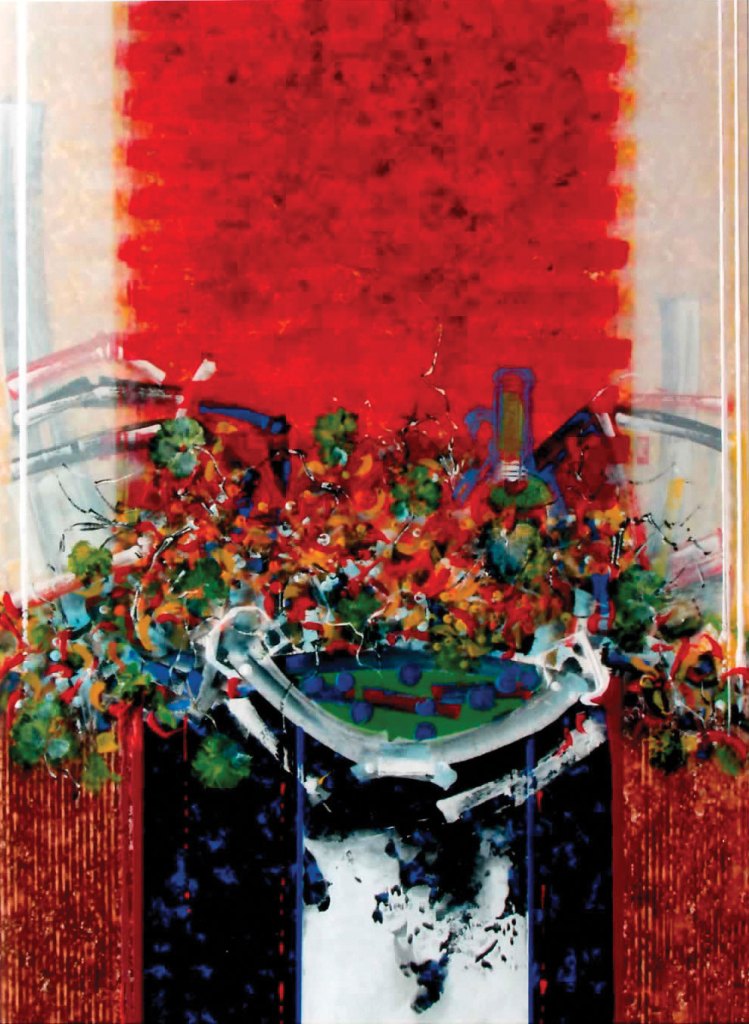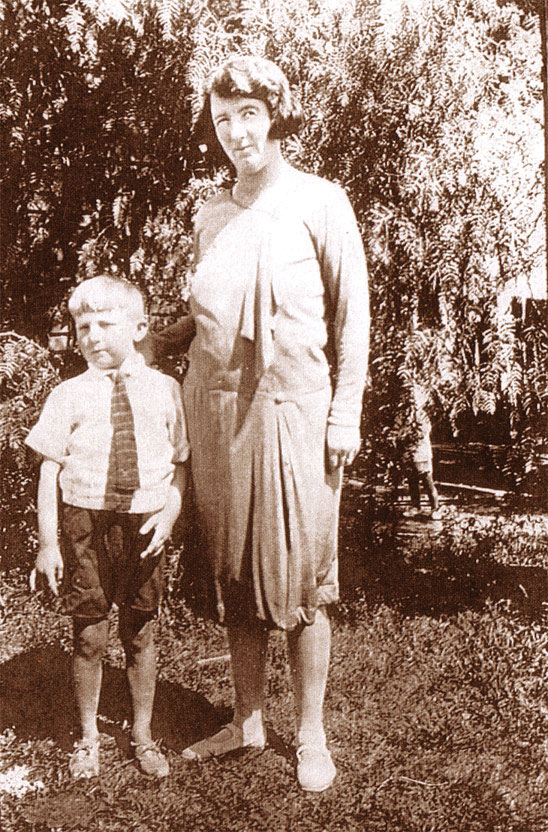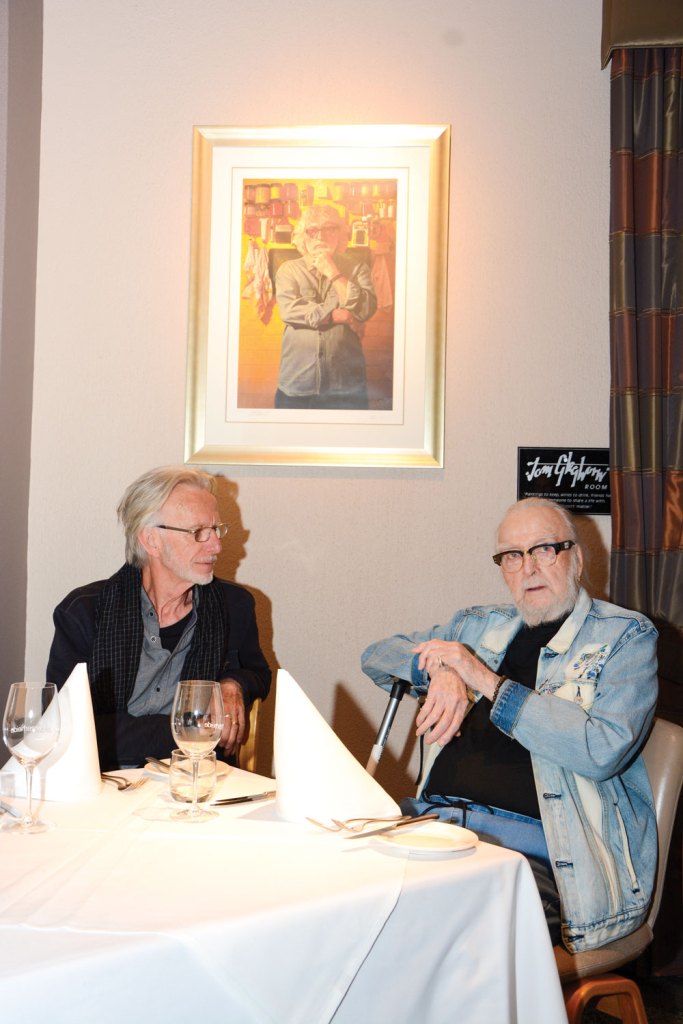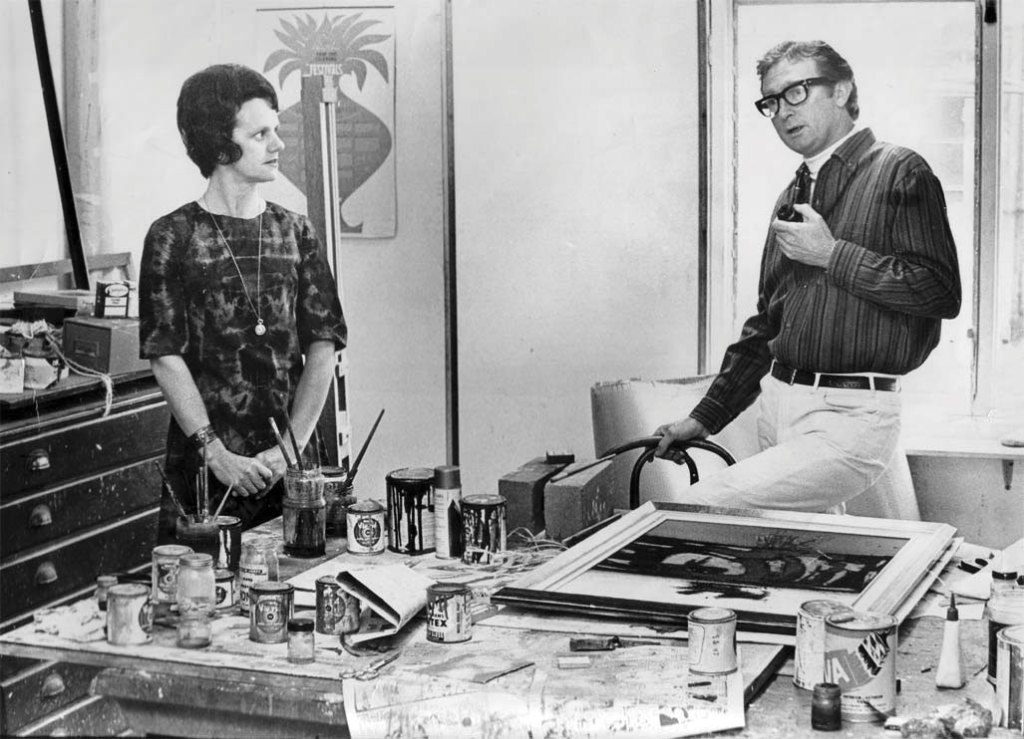A century on canvas

In his 100 years on this earth, artist Tom Gleghorn has gone from a misunderstood young person to one of the country’s most renowned artists.
“I often wonder why I’ve left the moon white,” renowned artist Tom Gleghorn says, eyes fixed on a painting he created about three decades ago. If he had his time again, Tom would add slight warmth to it – a touch of gamboge and lemon yellow mixed with the white.
Moon in the Vines hangs across the room from where Tom sits with SALIFE at a table in Lenzerheide Restaurant in Mitcham, where a significant collection of the artist’s work is on show. The door just off to the side leads to the Tom Gleghorn Room; an ode to this man who has contributed so richly to the state’s artistic landscape (and the owners of Lenzerheide are fans of his work).
A plaque at the door declares, “Paintings to keep, wines to drink, friends for laughter, someone to share a life with. The rest doesn’t matter.” It’s Tom’s life motto.
Having just celebrated his 100th birthday, Tom chats about how his use of colour was bolder in his earlier years – perhaps a reflection of youth.


It’s been a long time since Tom brushed the most vibrant of colours across his canvases, but even today, as a 100-year-old man, he’s still putting paint to paper. Art has been the thread that has run through Tom’s whole life, ever since he was a child growing up in the Depression era.
He didn’t live in a house where art tools were easy to come by, but one day he came home with some pencils and declared to his mother that he wanted to draw. Tom’s first encounter with a brush came after he found some old paints belonging to his father, whose hair oil he used to thin the paint.
That first painting became one called Open Road, a depiction of a swagman walking down a bush track.
That piece was awarded a prize, for which Tom won art supplies and so he continued on. Much of Tom’s inspiration comes from the Australian landscape, but he was born in the small mining town of Thornley in England in 1925 and came out to Australia on the cusp of the Great Depression.
He arrived as a three-year-old and settled with his family in Warners Bay on Lake Macquarie in New South Wales. Tom describes his father, also Tom – a coal miner – as a quaint English man, and his mother, Margaret, was a housewife.
You might like

“They were very nice people, sort of proper,” Tom says. “I didn’t fit in, but I’ve never fitted in anywhere.”
Tom’s brother George passed away a few years ago, but he’s had a lasting impression on Tom. To this day, Tom eats with more speed than is necessary – a habit he formed to ensure George didn’t eat all his food. “They were tough times; they were good and bad times. Actually, to me, they were great times – nothing wrong with being hungry. You really appreciate food.”
Tom briefly worked as a fitter and turner, but left to work in display design in Newcastle, never receiving any formal training in art. He then moved to Sydney with wife Elsie and two children Anne and Kim where he was an artist and designer in retail spaces. Across his career, Tom has amassed many accolades, including becoming director at the Blaxland Art Gallery in Sydney, being awarded the Helena Rubenstein Travelling Scholarship and holding several teaching positions in Adelaide, after moving here in 1969.
In 2020, Tom was honoured with the exhibition Homeward Bound, at the Newcastle Art Gallery, featuring his life’s work.
Throughout the years, Tom has never stopped painting, and a deep appreciation of the small things is something that has informed his art, which are largely abstract landscapes.
When he paints, he thinks about the birdsong, the clouds moving and the warmth of the sun.
“I remember way back when I first started, I was listening to birds singing, and I remember thinking to myself, ‘how on earth would you do that? How would you interpret that?’ And I’ve never ever found out.
“I’m still, to this day, trying to paint birdsong because I grew up with birds. I had an open verandah, where I slept, listening to birds, night and day.”
The wind, too is a great inspiration for Tom’s work.
“The wind, the wind is wonderful. If you try to fathom what you’re listening to, you really can’t. There’s no explanation there. It’s a haunting thing. And by the time you’ve got an answer, the moment is gone and it’s not there anymore. I discovered when I was very young that the wind was the breath of landscape … the land itself is breathing and embracing you.”

Today at Lenzerheide Restaurant, Tom’s friend, famed film director Scott Hicks, has shown up to support him, along with Tom’s granddaughter, Rebecca. Tom and Scott met through family; Rebecca is Scott’s niece through marriage.
“Tom is an example of someone who could make something of their life that wasn’t just laid out for them, and who could make a life in creativity,” Scott says.
For Tom, the friendship is similarly inspiring. “Scott left me with an idea of where images come from, and I don’t know how this happened, it just came out of a conversation we had. Because I could have these idiotic conversations with this lad and he doesn’t laugh at me. He waits till he gets home, then locks the door and laughs. Lovely boy.”
One of Scott’s fondest memories of Tom is visiting one day before Tom was about to go out.
Subscribe for updates
“You had a shopping bag and I had a look in the bag for some reason, and you had a little porcelain tea cup and I think there was a bottle of red.”
When Scott asked where he was going, Tom simply replied that he was going to sit and have a look at people.
“You had your exquisite little tea cup,” Scott says. Tom’s reply: “I like a little bit of elegance in my life.” The night prior to this chat, Scott was drinking a red from a tea cup in honour of his friend.

Tom is incredibly sharp for a centenarian and was living independently up until a couple of years ago, and he’s now living at Resthaven with wife Elsie, who was his first girlfriend at 18 years old – they’ve now been married 77 years.
The pair met when Tom, aged 16 or 17, and his friend were sitting behind Elsie and the friend was tapping her on the shoulder with a rolled-up newspaper and Tom told him to stop.
“She just turned around and gave me this lovely smile. That was nice – better than a ‘thank you’.”
The pair was married at 21 years of age. Elsie was a big fan of Tom’s work from the start – even if her father did call him a “no-good cowboy who will amount to nothing”.
Rebecca has wonderful memories growing up with Tom, more like a best friend than a grandfather.
“I just adore him; I had a very colourful upbringing and I’ve been able to meet some wonderful people,” she says.
She recalls Tom walking her to school, covered in paint and looking a bit ragged with his long hair, all his jewellery and tattoos – which he’d done himself. One day, a teacher questioned her about a story going around that a man who looks homeless was walking her to school.
“I said, ‘Oh yes, him. I found him in the park, in Heywood Park’.”
Rebecca’s school ended up auctioning a painting of Tom’s and was able to construct a pool with the profits.

Tom spent his 100th birthday – on June 2 – with family and close friends at home, and says the milestone has him reflecting.
“It brings a completeness to your life. All of a sudden there’s a reason; I’m alive.”
Looking back on a century, Tom is certain about the one trait that has enriched his life the most.
“Tolerance … You become more human, more understanding, friendships develop that you don’t expect. And unexpectedness is pretty important, I think.”
As for his career, Tom has always maintained he doesn’t think of himself as an artist.
“I’m not an artist … that’s just what I do, it’s my life,” he says. “It’s just something I’ve done, you know. I got up one morning, wanted to paint and away I went. It’s an extension of your personality. Trying to understand what everything’s about.”
This article first appeared in the July 2025 issue of SALIFE magazine.





